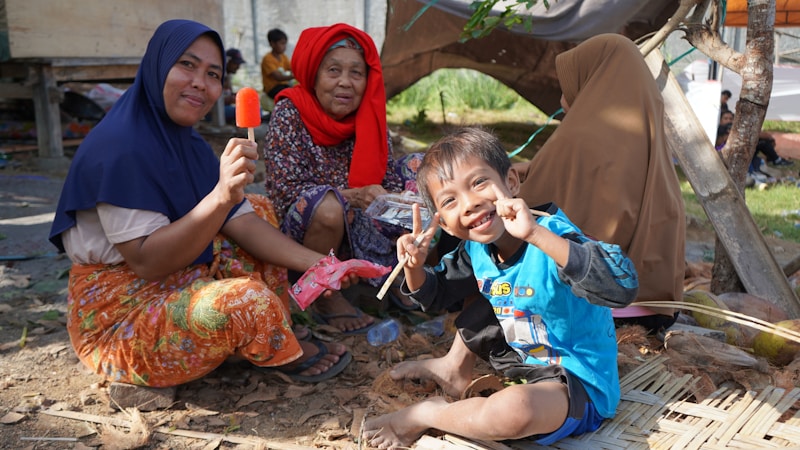Exploring Heritage Wedding Traditions: A Fusion of Culture and Romance
Weddings are not just the union of two individuals; they are the celebration of cultural heritage, family legacy, and rich traditions. Heritage wedding traditions encompass rituals and customs passed down through generations, reflecting the uniqueness of different cultures. In this article, we will delve into various heritage wedding traditions from around the globe, their significance, and how modern couples can incorporate these elements into their special day.
The Importance of Heritage in Weddings
Heritage plays a crucial role in shaping wedding ceremonies. It serves as a link between the past and present, offering couples a way to honor their ancestry while creating new memories. Weddings infused with heritage traditions often foster a deeper sense of belonging and connection among families and communities.
Key Elements of Heritage Wedding Traditions
Every culture has its unique customs that contribute to the richness of wedding ceremonies. Here are some key elements that often characterize heritage wedding traditions:
| Element | Description |
| Attire | Traditional garments that reflect cultural identity, such as the Indian saree or Japanese kimono. |
| Ceremony Rituals | Specific rituals like the Greek 'Koumbaro' or the Jewish 'Chuppah' marking the union. |
| Music and Dance | Incorporating traditional music and dances, like the Italian Tarantella or Indian Bhangra. |
| Food and Drink | Menus featuring traditional dishes, which symbolize family heritage and cultural identity. |
| Decorations | Utilizing traditional symbols and motifs that represent the couple's cultural backgrounds. |
Heritage Wedding Traditions Around the World
Let's take a closer look at some unique wedding traditions from different cultures:
1. Indian Weddings
Indian weddings are renowned for their vibrant colors and elaborate rituals. A popular heritage tradition is the Mehndi ceremony, where intricate henna designs are applied to the bride's hands and feet, symbolizing beauty and auspiciousness. Another key component is the Saat Phere, where the couple circles a sacred fire seven times, vowing to support each other through various life stages.
2. Japanese Weddings
In Japan, traditional weddings often include a ceremony called Shinto. The couple wears ceremonial attire, typically a shiromuku for the bride (a white kimono) and a montsuki for the groom. The ceremony includes purification rituals, sake sharing, and offerings to the kami (spirits), symbolizing the merging of two families.
3. Mexican Weddings
Mexican weddings are vibrant affairs filled with color and music. A beautiful heritage tradition is the lazo ceremony, where a rope or rosary is draped over the couple in a figure-eight shape, symbolizing their union. Additionally, traditional music like mariachi plays a significant role in celebrating love and joy.
4. Jewish Weddings
Jewish weddings are rich in symbolism. The couple stands under a chuppah, a canopy that represents their new home together. Another important tradition is the breaking of the glass, symbolizing the fragility of relationships and the commitment to stand by each other in times of sorrow and joy.
5. Scottish Weddings
Scottish weddings often include unique heritage elements such as the handfasting ceremony, where the couple's hands are tied together, symbolizing their union. Traditional clothing, such as kilts, and the playing of bagpipes are also essential elements of the celebration.

Modern Couples Embracing Heritage Weddings
In today's global society, many couples are choosing to incorporate their heritage into their weddings, making them uniquely personal and culturally rich. Here are some ways modern couples can celebrate their heritage wedding traditions:
1. Fusion Ceremonies
Couples from different backgrounds can create fusion ceremonies that blend multiple traditions. For instance, an Indian-Greek couple might incorporate the Indian Mehndi ceremony with Greek plate smashing, celebrating both heritages harmoniously.
2. Personalized Attire
Instead of the conventional white wedding dress, couples can opt for traditional attire that represents their heritage. This not only pays homage to their culture but also allows them to express their identities on their special day.
3. Themed Decorations
Create a wedding theme reflecting one's cultural background through decorations. Incorporating symbols, colors, and motifs from different cultures can enhance the atmosphere and showcase the couple's unique story.
4. Heritage-Inspired Cuisine
Serving traditional dishes from both cultures can create a memorable dining experience. Create a menu that highlights flavors and recipes passed down through generations, allowing guests to savor the couple's heritage.
5. Learning About Each Other’s Traditions
Couples should take the time to learn about each other’s traditions. This not only fosters a deeper understanding and respect for one another's backgrounds but also allows the couple to create a more meaningful wedding ceremony.
The Future of Heritage Wedding Traditions
As society continues to evolve, so do wedding traditions. Heritage wedding traditions will likely continue to adapt, merging with contemporary styles and ideas. This evolution offers couples the opportunity to personalize their ceremonies while maintaining a connection to their cultural roots.
Conclusion and Recommendations
Heritage wedding traditions provide a unique way for couples to celebrate their love while honoring their cultural backgrounds. By incorporating these traditions, couples can create a meaningful and memorable event that reflects their identities and family legacies. As you plan your special day, consider exploring your heritage's customs and rituals. Remember, a wedding is not just a ceremony; it's an intersection of love, history, and family. Embrace your roots, and let your special day be a celebration of tradition and romance!